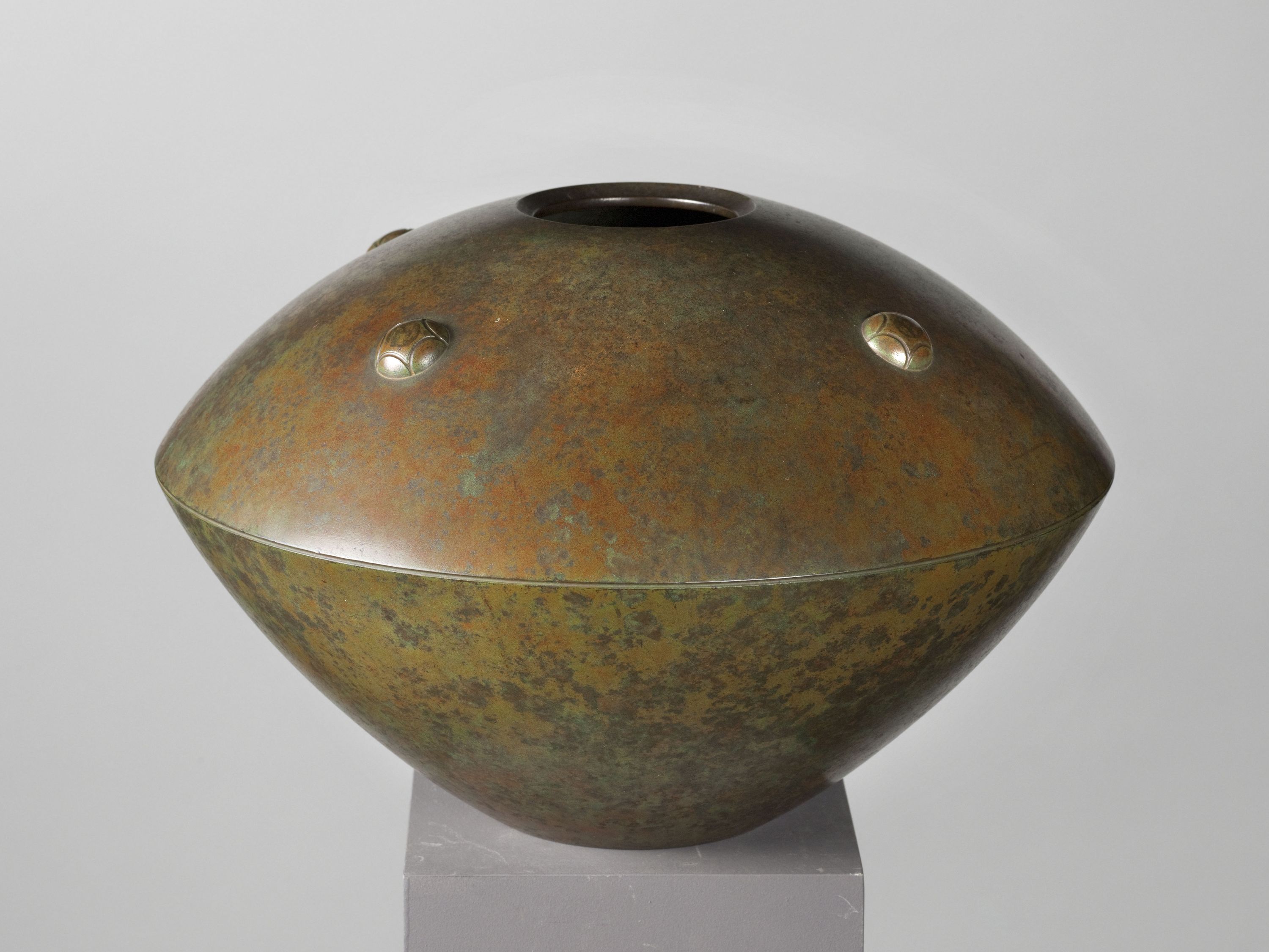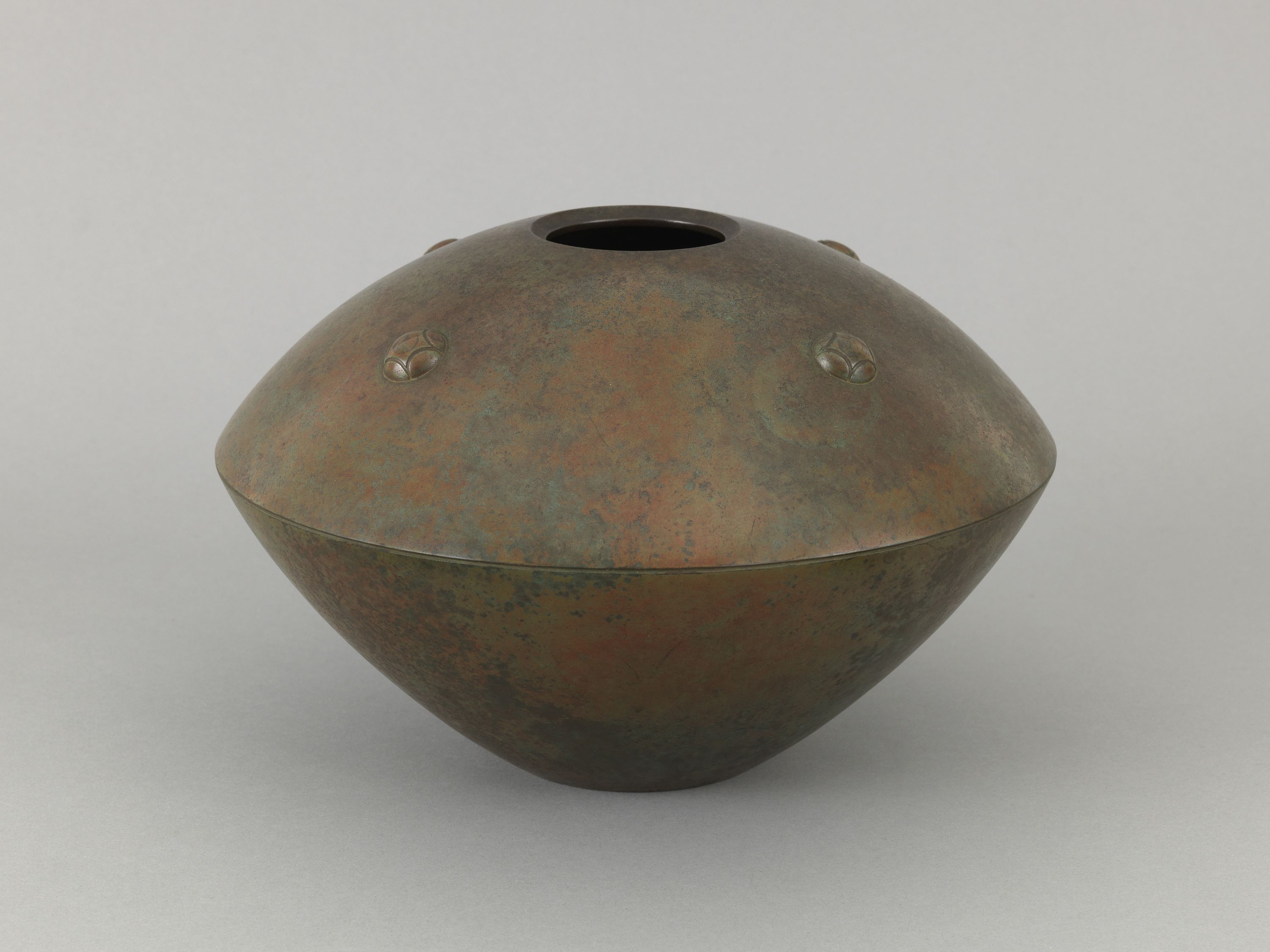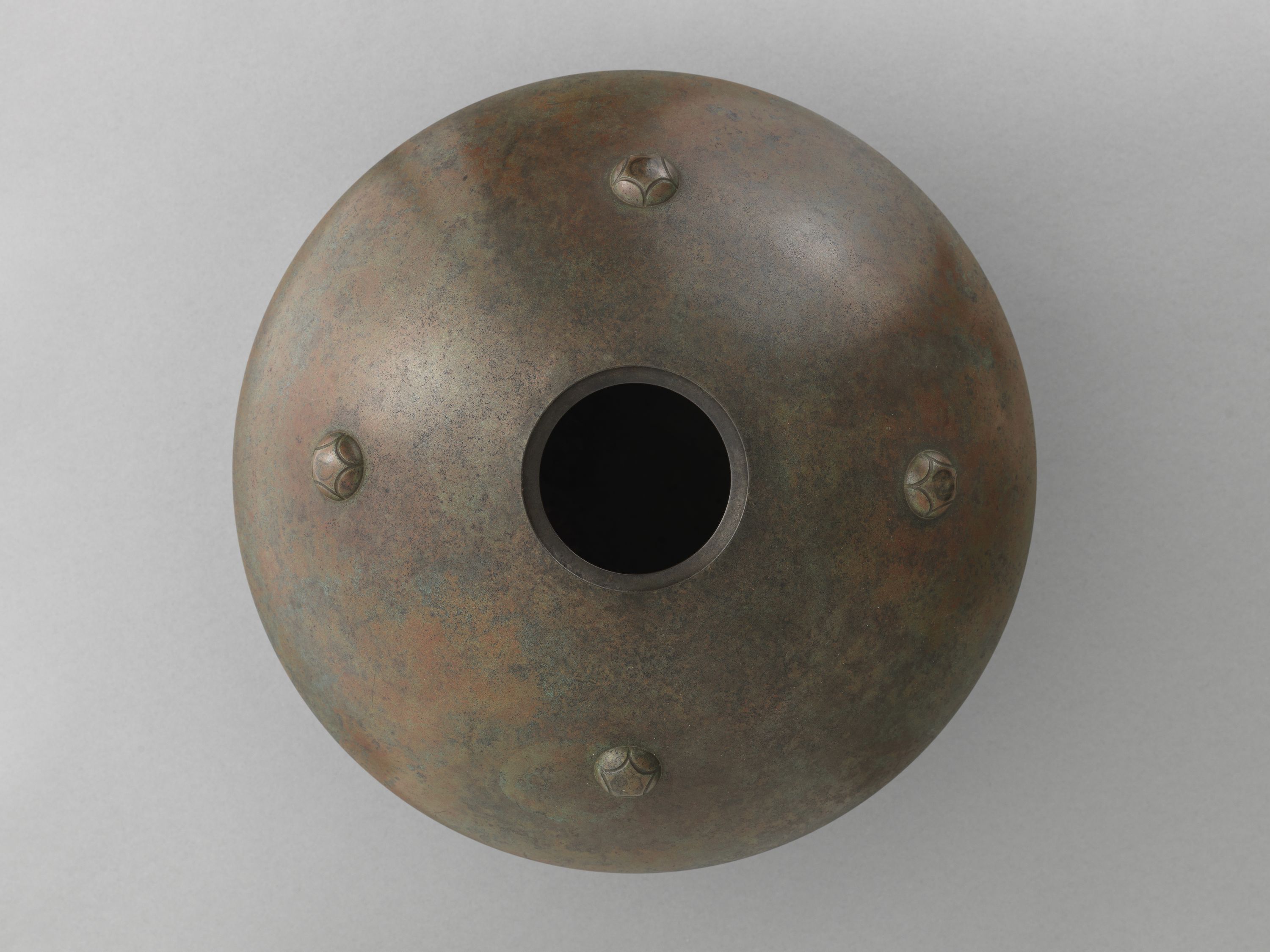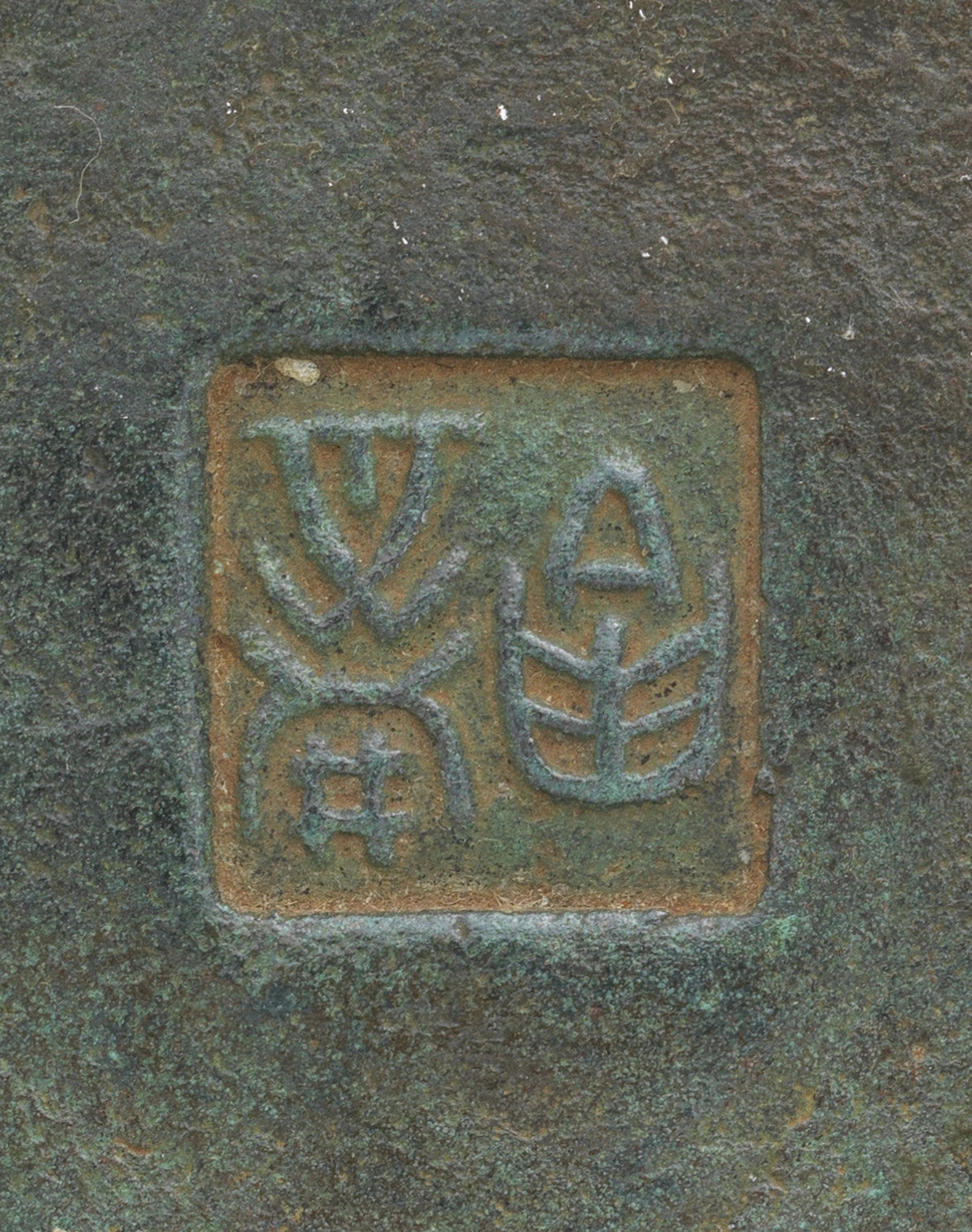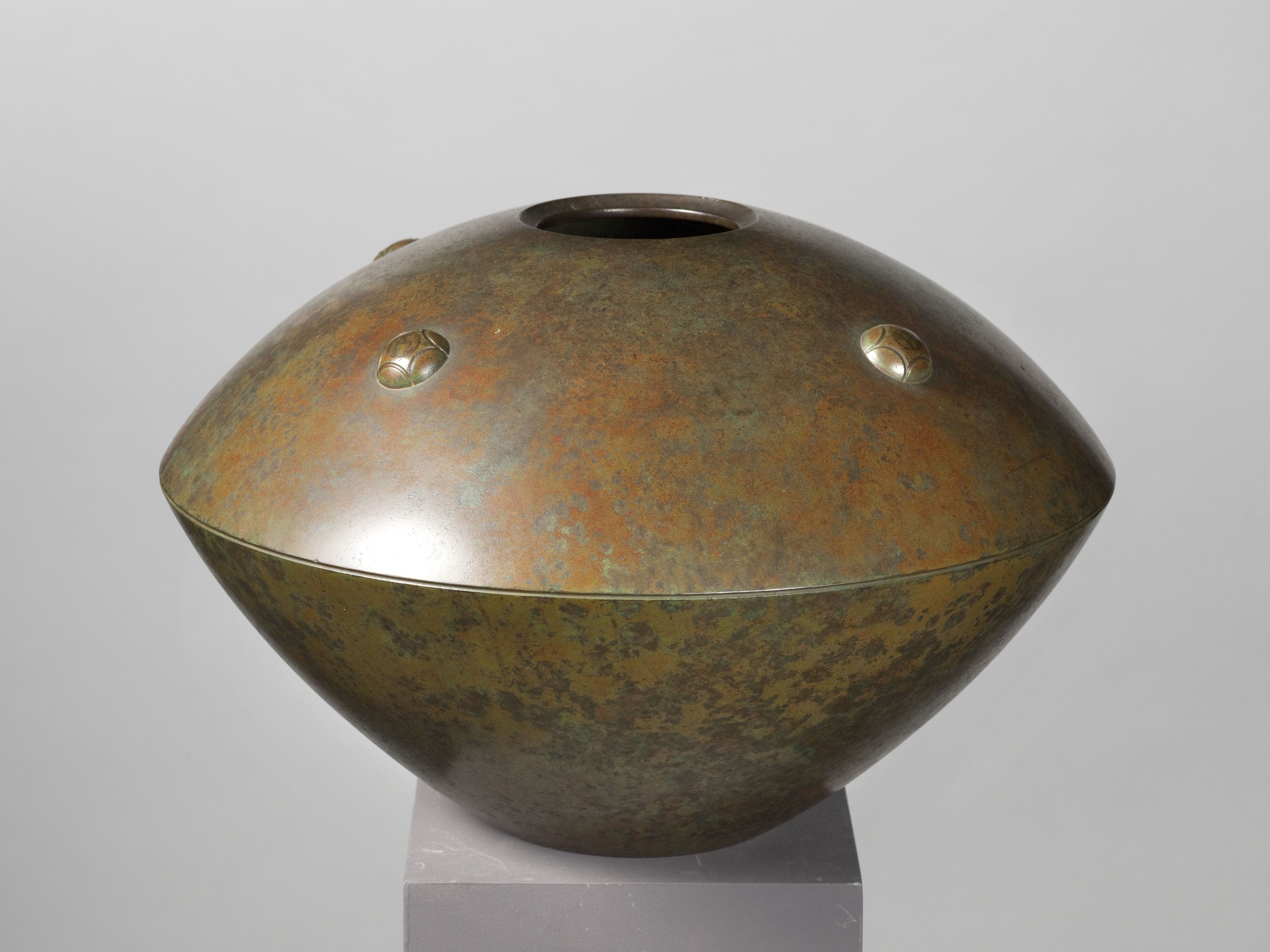
Vase
Bronze
Vase
Don manuel : Société des Amis du musée Cernuschi
M.C. 2013-3
This vase is made up of two conical forms separated by a concentric incised groove. The wall of the upper section curves inwards to the narrow, circular mouth, while the lower wall tapers towards the base. This spare, balanced piece has only a simple decoration of four floral buttons in relief. The whole piece is enhanced by its red-brown and greenish patina.
Takamura Toyochika (1890-1972) was born in Tokyo into a famous family of artists. He was the third son of the sculptor Takamura Kōun (1852-1934), who taught sculpture at the Tokyo Fine Arts School and was a reformer of Japanese sculpture at the dawn of the modern era. His brother was the poet Takamura Kōtarō. In 1915, Toyochika graduated from the lost wax bronze casting section at the Tokyo Fine Arts School. He started working with Tsuda Nobuo and became a member of the Seikokai society of bronze foundrymen (“Green Vase Society”). He participated in several movements to reform the art of bronze: in 1915 the group Kokukisha (“Black Brilliance Society”), in 1918 the group Chūjinsha (“Society of Pillar Men”) and in 1919 the Sōshoku bijutsuka kyōkai (“Association of Decorative Artists”). In 1926, he was one of the founders of the avant-garde movement called Mukei (“Formless”). This group would influence the Art Deco style in Japan. When the decorative arts were admitted at the 1927 Imperial Arts exhibition (Teiten), hitherto reserved for the fine arts, Toyochika presented his work and was awarded the special jury prize. He subsequently occupied official posts at this Exhibition. Later, he was selected for the Shin Bunten and Nitten exhibitions. His career was also shaped by his teaching at the Tokyo Fine Arts School. In 1935, he founded the Association of Veritable Applied Arts, which advocated the principles of constructivism and functionalism related to Bauhaus. In 1964, he was named “Living National Treasure” for his bronze casting work. He is particularly well known for his role in the Japanese Art Deco movement.
